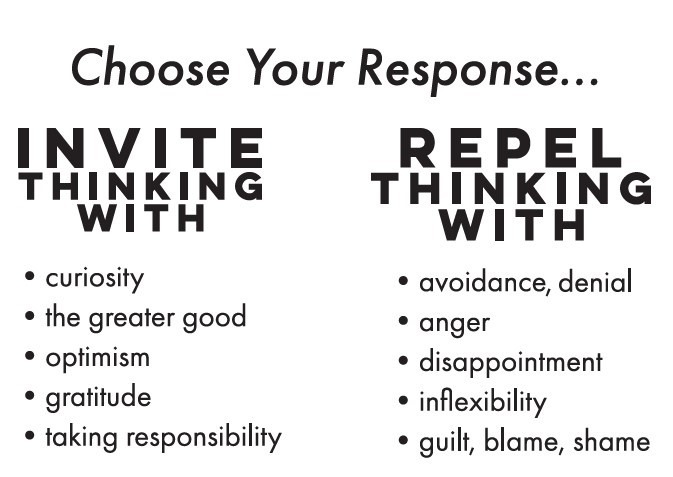Four Modes of Coaching Magic: Respond Mode - Respond Approaches
Jun 18, 2022

In this next step of the algorithm, we learn that strong leaders choose to Respond by thinking about their thinking and helping others do the same. The opposite of Responding is mindless and thoughtless Reaction. The healthier choice is to Respond.
I was first introduced to the concept that individuals can and should choose their response when I read the book Man’s Search for Meaning, by Viktor E. Frankl. In this powerful yet painful book, Frankl lets us into his world and his thinking, as he discovered what kept him alive during his time as a prisoner in a Nazi concentration camp. Frankl taught a formula that helps explain his claim:

Event plus Response equals Outcome. Events will happen, and in life, we rarely have control over events that happen to us or around us. What we do have control over is our response. You can’t control that an employee is not accountable, but you CAN control your response to it. You can’t control the outcome, either, yet your response to the event can affect the outcome. When your response is focused on the long term and fueled by possibility-based thinking, you will have the best chance for a positive outcome.
Choosing your Response
It would be a wonderful, utopian world if all of us were allotted ample time to intentionally choose our response to any event. During the emergency water landing in the Hudson River in 2009, many people questioned the decisions of Captain Chesley “Sully” Sullenburger when he chose the response of landing the plane in the Hudson River. When the data was examined at the subsequent FAA hearing, several experts made the observation that he could have and should have turned the plane around to land safely at an airport. What Captain Sully testified to is that response time had not been added to the simulations that the experts had run. While in a perfect world, a different scenario had the passengers landing safely on the ground, it took the Captain and his ground team a full 55 seconds to process the information and make a decision. If this case seems extreme, it's only because lives were at stake. In the real world, sometimes 55 seconds is a luxury in which to choose our response. I imagine that if we did live in that utopian world, where we could push pause on everything while we chose our response, we’d have more peace and happiness among the humans inhabiting our planet. The reality is that we are social beings who are often irrational and instinct-driven. Other people's behavior affects our own and sometimes their plans or actions don’t coincide with our desired timing. Because of this, people like you and I, who are striving to live in the Coach Approach, should pre-think and rehearse our responses so we are ready to engage in coaching at any time, just like Captain Sully’s practice in the simulator allowed him to protect every life on his aircraft.
Here are some possibility-thinking based and long-term focused Respond approaches that get favorable outcomes: (This is not exhaustive but just a good start. Feel free to come up with your own.)
- Curiosity: When we take a curious approach in our response, we withhold judgment. This allows us to really listen and seek to understand the person we are coaching.
- Compassion: Choosing to respond with compassion involves simply being with a person in their thoughts. The goal of the compassion response is to help this person feel heard and acknowledge that the feelings they are experiencing are normal.
- For the greater good: When we take the “for the greater good” approach, we think of a bigger picture, we think long term. We rise above the situation to focus on what's really important. We think about the outcome that we’d like to see, rather than just the immediate issue in front of us. We choose to enter into the hard topics now, so we can have an easier future.
- Optimism: Choosing to respond with optimism involves going into situations knowing for certain that there is a solution. We take a “How can we . . .?” position with issues because we know there are many paths to getting to the solution or goal.
- Gratitude: Choosing this response requires showing appreciation for the person, the issue, or the situation itself. Responding with gratitude involves acknowledging people for the work they’ve already done or the thinking they are doing. It can also be useful when someone brings a big issue to light that otherwise would be hidden. When you choose to be appreciative, people are more likely to speak freely and get to the real issue more quickly.
- Take responsibility: Taking responsibility for your own actions or the actions of the company or event shows humility. When you own the responsibility for the outcome, you show strength and leadership. When apologies are used with this approach, the human connection is strengthened.
Stay connected with news and updates!
Join our mailing list to receive the latest news and updates from our team.
Don't worry, your information will not be shared.
We hate SPAM. We will never sell your information, for any reason.

